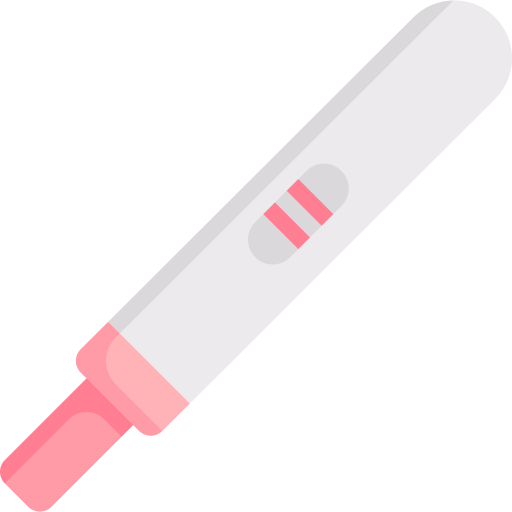 Sex can be fun but not everything frisky has to be risky!
Sex can be fun but not everything frisky has to be risky!

While you might be aware that using contraception is one of the easiest ways to make sexual activity pleasurable without the fear of an unwanted pregnancy or getting infected with an STI (sexually transmitted infection) people may choose contraception for several reasons.
For example, apart from being used for the main purpose of birth control, women may also use certain contraceptive methods to regulate their hormones, fight acne issues, mitigate endometriosis-related pains, or simply reduce any risks of contracting STIs.
Choosing any form of contraception or birth control method should be your personal decision, depending on where you are in life. However, it should be an informed one.
What's the difference between birth control vs family planning?
Though often used interchangeably, you need to know birth control is not the same as family planning!
Women may opt for contraception or birth control even if they don't intend to plan a family. They may use birth control to avoid unintended pregnancies or to enjoy their sex life without worrying about STIs. It's an interventive empowerment tool that allows women to prevent pregnancy for whatever reason they choose, helping them determine the course of their lives.

On the other hand, family planning refers to a two-way consensual dialogue between intimate adults on how to start a family of their own. A pathway that helps people reach their fertility and family goals. This generally includes discussions on the number of children the adults want and the best time to have them.
Why should planning a family always be my choice?
Each year, thousands of women around the world die due to pregnancies that come with health risks during childbirth and even by unsafe abortion procedures. This can be mitigated if women opt for family planning instead of risking the lives of their babies and themselves.
 Family planning should always be your choice because:
Family planning should always be your choice because:
A planned pregnancy increases the chances of having a healthier baby without the mother being put at risk.
Planning to have children after a certain age can help parents acquire adequate education and get settled enough to bear the children's expenses.
Fewer children allow parents to meet the required needs of the family. For example, it can mean more food for each child and more quality time spent together as a family.
So how do I begin planning a family?
Step 1: Think for yourself.

Before discussing planning a child with your partner or family, think about if and why you want one yourself. See if you are mentally, emotionally, and financially ready to be a mother. Do you see yourself living up to and meeting the needs of a newborn?
Step 2: Initiate a conversation with your partner.

Choose a suitable time to initiate this conversation with your partner. See if you both find yourselves on the same page about having a child. Discuss your financials, livelihood, and careers, then see how many children you both may want to have with timely gaps in between.
Step 3: Consult a doctor.

Visit a health care professional to know more about starting a family. Let the doctor examine if you and your partner are healthy enough to bear a child. Talk through the process of pregnancy, child spacing, and family planning methods you can use.
Step 4: Decide on a family planning method that works for you.

Find out which birth control method fits your needs and budget while being effective and accessible. Pick the right one for you and make sure you use one that keeps you and your safe from being sexually infected.
Step 5: Enjoy your time as first-time parents.

Imagine the feeling of holding your firstborn child in your arms. Pure joy! Enjoy your time with the newborn but also cater to your needs as a mother, as it can also be a challenging experience.
Step 6: Practice child spacing for a healthy family.

Allow yourself some time to heal after the baby is born. An 18-month gap is considered the appropriate child spacing time necessary to keep both the mother and the baby healthy. It reduces any health risks involved and prevents the birth of a premature baby.
What contraceptive methods can I use to plan a family?
 Searching for the best-suited contraceptive for planning a family can be a tricky task. It entirely depends on what works for you. However, some generic factors that you might want to consider include:
Searching for the best-suited contraceptive for planning a family can be a tricky task. It entirely depends on what works for you. However, some generic factors that you might want to consider include:
the effectiveness of the method
your lifestyle
cost
side effects it may cause
The good news: there are a number of contraceptives out there for you to pick from. However, not every method may be easily accessible to you.

Broadly, these birth control methods can be classified into three different categories.
Natural methods
Natural family planning methods don't involve any costs, medications, or physical side effects. A natural method is used to minimize the risks of any unintended pregnancies, though the results might not be highly guaranteed.
Some of the most common natural methods include:
Withdrawal: a man withdraws his penis from the vagina before he ejaculates, such that the sperm is not able to enter the vagina.
Rhythm calendar method: this follows women keeping track of their monthly fertility period and abstaining from sex when ovulation chances are high.
Lactational amenorrhea method (LAM): mostly used for child spacing, LAM suggests a woman must not consider another pregnancy (through unprotected sexual intercourse, for example) while she's still breastfeeding her first child.

Medically engineered methods
There are a number of great options for birth control and family planning such as IUDs and implants, contraceptive pills, patches, rings, and shots, but condom use is the only contraception method that reliably protects you from STIs (sexually transmitted infections).
Permanent methods
The permanent method or sterilization process involves surgical procedures that ensure lasting birth control, though there are non-surgical ways, too. Permanent methods ensure that reproduction doesn't occur.
Nonetheless, they don't protect against STI's and the cost of the procedures may also be on the high-end.
Note: people should choose this form of birth control ONLY when they're sure they no longer want to have a child or any children at all.
Quiz
Zahir and Amina have two children together. Their last pregnancy was unintended, since they didn't use contraception. The couple wants to keep their sex life active without having another baby at the moment. What should they do?
Take Action

Planning to begin (or expand) your family?
Here's what you should consider:
Your feedback matters to us.
This Byte helped me better understand the topic.
